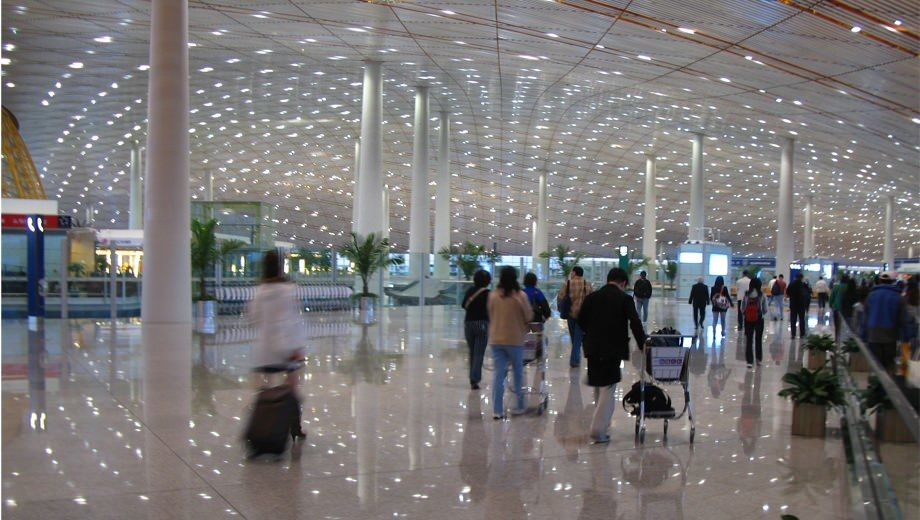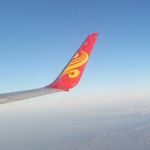Reader tips: expert guide to flying domestically in China

If you're planning to travel on business within China, Australian Business Traveller reader Chris Tudehope has some hard-won tips for booking your flights, business class vs economy, making your way efficiently through the airport, and some special tips for flying through Beijing and Shanghai.
Booking: use third-party sites
I made all my travel decisions based on price: all four airlines have relatively similar on-board offerings, but pricing varied greatly for similarly timed flights.
When booking domestic flights, I recommend not going through the airline, but rather through sites such as CTrip or ELong.
I used CTrip, which I found to be absolutely brilliant. When my Beijing-Shanghai flight on Air China was cancelled, I received a phone call detailing all my options and was promptly moved to a Hainan Airlines flight.
Similarly, when I had to change the date of my Beijing-Shanghai round-trip, it was done with little fuss and few fees.
Note that if you make two or more bookings on this site, or spend 5000RMB (roughly A$750) or more on this site using a foreign credit card or travel money card, the company will request, as a means of avoiding fraud, that you scan and email copies of passport, the front and back of the card and a Statutory Declaration authorising the payment to occur to their offices.
I refused to do this, as I didn't want my information floating around the Internet, so paid a visit with my passport to their Dongsi Shitiao office in Beijing (located near Dongsi Shitiao subway station on Line 2).
Once inside the office, no one speaks English, so you will be put on the phone to the English phone service. They will then organise flights over the phone (with no additional surcharges) and send you to a smoky room where calculators are used and your card swiped. All future transactions then won't require a trip to the office.
Domestic business class: is it worth it?
In terms of pricing, business class won't be that much more than economy (perhaps an extra AUD$100), but the offering onboard can vary significantly from a nicely padded economy seat in a 2-2 configuration on a 737 to a lie-flat seat on an A330.
Food offerings, generally speaking, are fairly meagre. Entertainment, likewise, varies greatly depending on aircraft and airline.
The larger airports in China feature lounges for airlines with a significant number of flights.
For example, China Southern has a lounge in Harbin, where it has a sizeable presence, but no other airline does. Instead, they use a common lounge operated by the airport authority.
Overall, business class is quite hit and miss as to what you will get for your money. However, given the potentially minimal additional cost, it's not a bad bet if you plan wisely to get one of the better lounges and a good onboard offering.
Read more: how China's big four domestic airlines compare: seats, service, entertainment and food
At the airport: be prepared
As a foreigner, keep your passport at hand even for domestic flights, as this is the only acceptable form of ID other than a Chinese citizen card.
Generally speaking, 23kg of luggage is permitted, though most Chinese seem to travel with all their worldly possessions, as well as those of their entire extended family. My impression is that this rule is fairly relaxed.
After check-in, you’ll pass through an identity check where you will need your passport, so that it can be cross-referenced with your boarding pass. Don’t put it away after check-in.
Security is directly after the ID check, with the run-of-the-mill metal detector, followed by standing on a box and being run over with a hand-held metal detector and a pat-down. Note that this happens to every passenger regardless of whether you set the alarm off.
Lighters can’t be taken through security, so must be deposited in bins pre-security (an issue for local travellers who seem not to be able to go three steps without going through a pack of cigarettes – and they say that Beijing’s poor air quality is due to car usage…).
As a plus, in the arrivals hall of all airports, there is a bin where passengers can take another cigarette lighter.
Also note that mobile phones can’t be used on-board, regardless of whether or not flight mode has been selected.
Beijing Airport: a quick guide
At Beijing Airport, there are 3 terminals. Terminals 1 and 2 are located next to each other.
- T1: Hainan Airlines and its subsidiaries' domestic flights
- T2: SkyTeam airlines China Southern and China Eastern and their subsidiaries, as well as an assortment of international airlines (including Hainan Airlines international operations)
- T3: Air China, Juneyao Airlines, Shandong Airlines, Shenzhen Airlines and Sichuan Airlines, as well as a slew of international airlinesb
If you're travelling by yourself the Airport Express is a speedy bet, but it only really makes sense to use between the hours of 8am and 10pm. (It starts running earlier, but not particularly frequently.) It costs 27RMB — 25RMB for the Airport Line and another 2RMB to get anywhere else in the network — A$5 all in.
The train travels in a loop, first to Terminal 3, and then to Terminal 2, which can add about 10 minutes to your journey. To travel to Terminal 1, get off at Terminal 2 and follow the signs — it's roughly 10 minutes' walk.
If you're travelling in a group, with bags, or for a flight departing pre-8am or arriving post-10pm, or don't feel like navigating public transport, then a taxi is a better option.
Departing from the airport taxi stand, a meter will automatically be used and black taxis aren't permitted. It's always a good idea to point to the meter and say yong, which means "use". The fare from most parts of Beijing will be anywhere for 90RMB to 150RMB (A$14-23).
I was staying in the Haidian district and my fare fluctuated between 90RMB and 120RMB. It's a few RMB more expensive to travel to/from Terminal 3 due to additional taxes and marginally further distance.
The pieces of paper the driver gives you when going through the boom gate going into or leaving the airport are receipts for the airport toll (charged per passenger) — but you won't need to show them, so you can bin them if you want to.
A note on Shanghai's airports
Generally speaking, Hongqiao is a better airport to fly into domestically, as it is closer to the centre of the city and has more domestic flights than Pudong.
Therefore, should your flight be significantly delayed, or even cancelled, it’s far easier to be transferred across to another flight — even on another airline (Air China, China Eastern and China Southern all seem to have flights operating interchangeably).
However, if business takes you to the eastern side of the river, such as modern Lujiazui, then Pudong, especially with its Maglev connections, may be a better option.
Got your own set of expert travel tips to share with AusBT readers? Email us and we'll help you put them together for an article.
Follow Australian Business Traveller on Twitter: we're @AusBT.


25 Feb 2013
Total posts 61
One practical thing to be prepared for spending an hour sitting on the tarmac. Chinese flight departures are classed as 'on time' based on when they board, not when they fly.
This usually means airlines game the system bu getting everyone on board as soon as they can, but then sitting stationary on the tarmac while they wait for a spot to open up.
Virgin Australia - Velocity Rewards
29 Aug 2012
Total posts 23
Hi Jon, I have to say that I never had this issue. Comparing all times to FlightStats when I'd get back to my apartment, it seemed that this website based the departure time on when wheels left the tarmac, as opposed to boarding (e.g. my Beijing-Harbin flight on China Southern left the gate 10 minutes early, yet according to FlightStats departed 5 minutes late - when the plane physically took off). Beijing Capital Airport can see one with long taxis, but all my flights in China were on-time - though I have heard of rather obscene delays occurring. I think it very much depends on airline and airport in this case.
25 Feb 2013
Total posts 61
Perhaps it is a regional issue. Most of my China flights are between Shanghai (though sometimes other ports) and Chengdu, and 85% of my travel usually gets arranged on China Eastern. I admit Shanghai isn't always bad, though enough to wonder (~5-6 times in that scenario). I'm yet to leave a Chengdu flight on time though, and the first time the university staff there warned me of it beforehand as it was a commonly known issue. I was told it was internal metrics that used this measure for the regional authorities (less important for Hainan, for example). It's all too possible too that perhaps they were just taking the mickey.
Cathay Pacific - The Marco Polo Club
07 Jun 2012
Total posts 32
"Also note that mobile phones can’t be used on-board, regardless of whether or not flight mode has been selected."
... and when has this ever stopped anybody on a Chinese flight haha?
03 Nov 2011
Total posts 35
Fantastic info! ausbt always seems to give me the exact sort of info I'm after :D. And at the right time too. :-0
Hi Guest, join in the discussion on Reader tips: expert guide to flying domestically in China